José Emilio Labra Gayo
An Ontology-Based multi-domain model in Social Network Analysis: Experimental validation and case study
Feb 03, 2024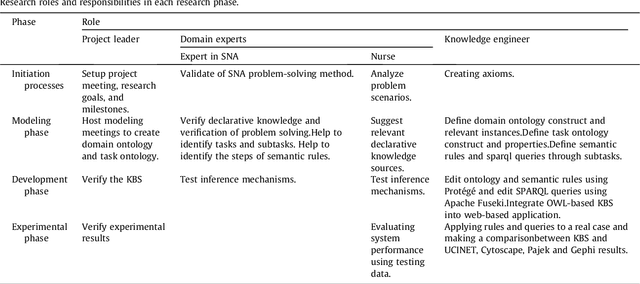
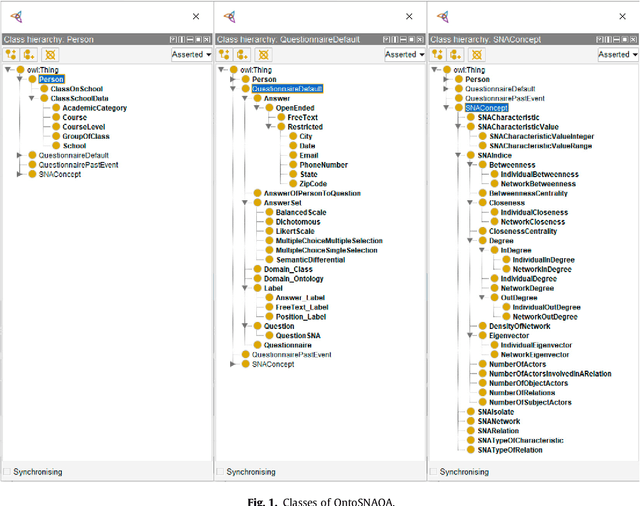
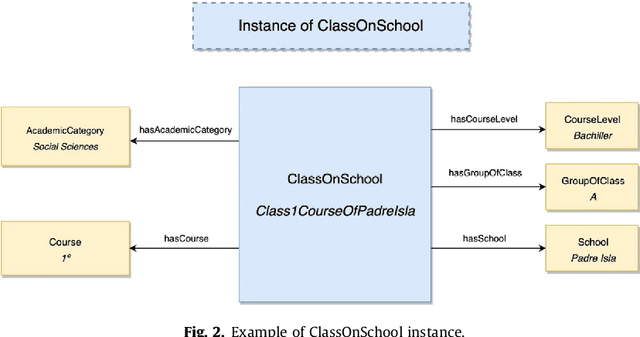
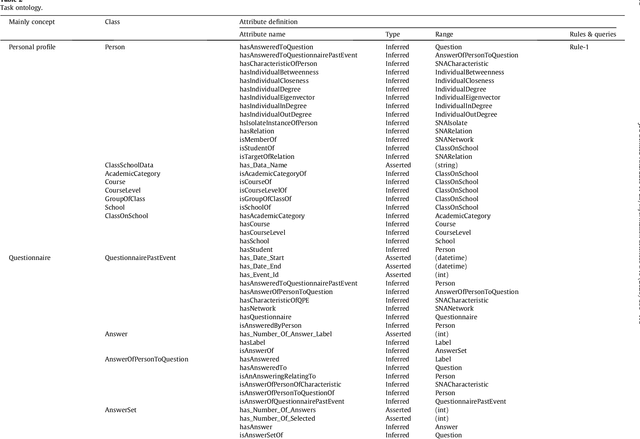
Abstract:The use of social network theory and methods of analysis have been applied to different domains in recent years, including public health. The complete procedure for carrying out a social network analysis (SNA) is a time-consuming task that entails a series of steps in which the expert in social network analysis could make mistakes. This research presents a multi-domain knowledge model capable of automatically gathering data and carrying out different social network analyses in different domains, without errors and obtaining the same conclusions that an expert in SNA would obtain. The model is represented in an ontology called OntoSNAQA, which is made up of classes, properties and rules representing the domains of People, Questionnaires and Social Network Analysis. Besides the ontology itself, different rules are represented by SWRL and SPARQL queries. A Knowledge Based System was created using OntoSNAQA and applied to a real case study in order to show the advantages of the approach. Finally, the results of an SNA analysis obtained through the model were compared to those obtained from some of the most widely used SNA applications: UCINET, Pajek, Cytoscape and Gephi, to test and confirm the validity of the model.
Knowledge Graphs
Mar 28, 2020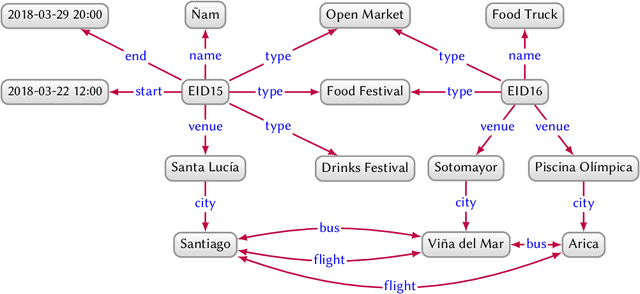
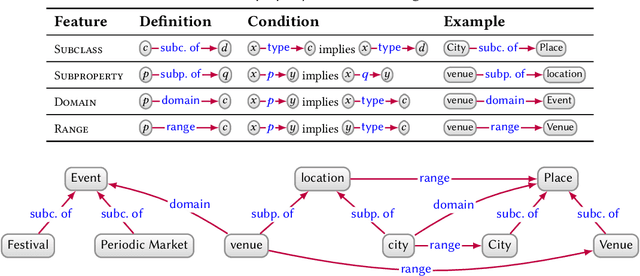
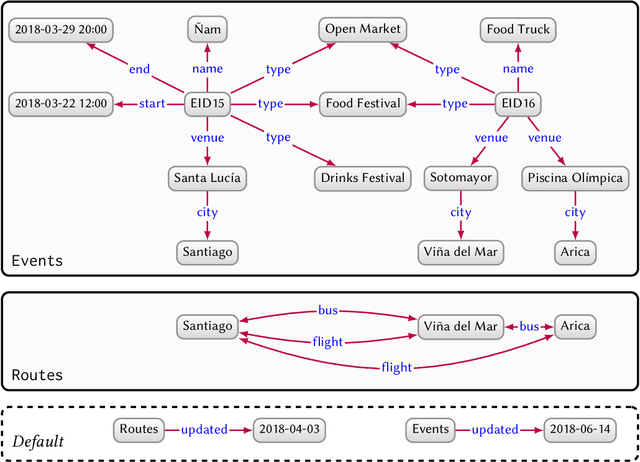
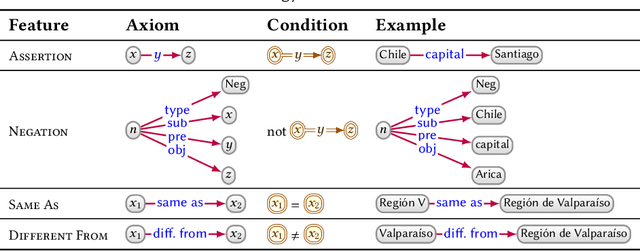
Abstract:In this paper we provide a comprehensive introduction to knowledge graphs, which have recently garnered significant attention from both industry and academia in scenarios that require exploiting diverse, dynamic, large-scale collections of data. After a general introduction, we motivate and contrast various graph-based data models and query languages that are used for knowledge graphs. We discuss the roles of schema, identity, and context in knowledge graphs. We explain how knowledge can be represented and extracted using a combination of deductive and inductive techniques. We summarise methods for the creation, enrichment, quality assessment, refinement, and publication of knowledge graphs. We provide an overview of prominent open knowledge graphs and enterprise knowledge graphs, their applications, and how they use the aforementioned techniques. We conclude with high-level future research directions for knowledge graphs.
 Add to Chrome
Add to Chrome Add to Firefox
Add to Firefox Add to Edge
Add to Edge